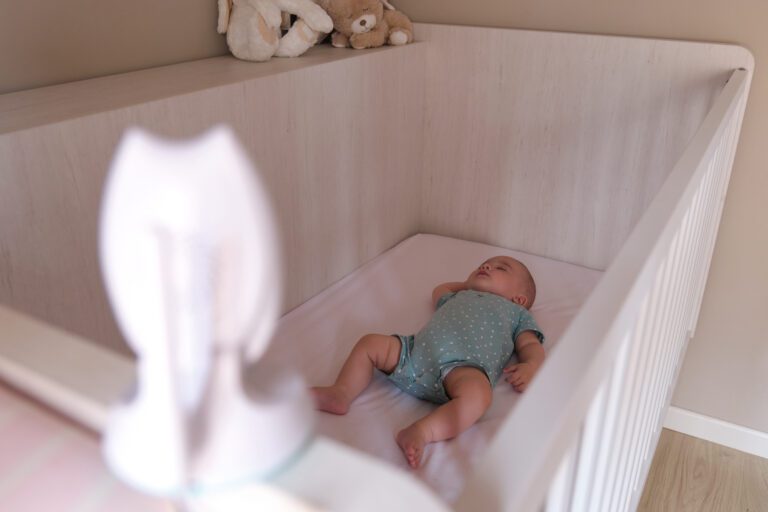Every year in the U.S., about 3,400 babies die suddenly and unexpectedly before their first birthday. Oftentimes, this occurs when baby is asleep or resting in their sleeping area. Although rates have been stagnant and disparities for black and brown babies persist, there are still actions we can all take to protect our beloved infants and toddlers.
Challenges and New Research
Often baby’s caregiver is at home but perhaps not in the same room when these deaths occur. As such, many families now use cameras that monitor their sleeping infants and toddlers.
A small study by researchers at the New York University Grossman School of Medicine used family-permitted videos to document the deaths of seven toddlers. The findings show the deaths to be associated with febrile seizures, and several of the home recordings provided insight based on the sound and/or movement of the seizure as it occurred, including the moments after.
One of the investigators, Laura Gould, MSc, MA, PT, lost her daughter to sudden unexplained death in children (SUDC; involving children 12 months and older) in 1997 at 15 months old. This tragedy led her to create the SUDC Registry and Research Collaborative that utilizes expert teams to better understand and learn to prevent these deaths.
SUID Prevention
Until researchers learn more, there are still many ways to help babies sleep safely and reduce the risk of sleep-related infant deaths:
- Place baby on their back to sleep, including daytime naps and overnight
- Use a firm, flat mattress made specifically for baby’s bassinet or crib
- Cover the mattress with a clean fitted sheet without any loose ends or corners
- Keep all blankets, pillows, crib bumpers, and toys out of the crib or bassinet
- Have baby sleep in the same room you sleep in but not on the same surface as you
- Dress baby in fitted clothes for the room’s temperature – not too hot or cold
- Do not cover your baby’s head with a hat, pajama cap, or hood while asleep
Never let baby sleep in devices made for sitting, (e.g., car seats, swings). Help your partner practice these safe sleep habits and teach them to anyone caring for your infant or toddler. Also, share this new knowledge throughout your community when you’re at community centers, faith-based organizations, or other neighborhood centers.
Reduce SUIDs Risks
Share these important recommendations with anyone caring for an infant or toddler:
- Never smoke or drink alcohol during pregnancy
- Avoid smoking and drinking when caring for baby
- Keep away anyone using recreational drugs (legal or illegal)
- Feed baby human milk directly from the breast
- Provide breastmilk in a bottle if nursing isn’t an option
- Offer baby a pacifier at nap and nighttime
- Stop swaddling baby once they try to roll over
- Allow baby time to play on their tummy while you watch over them
- Keep all baby’s appointments with their pediatric care provider
Safe Sleep Legislation and Video Monitoring Systems
In May 2022, the Safe Sleep for Babies Act went into effect. This pediatrician-led legislation supports parents and families by banning the sale of dangerous and unsafe products marketed for infant sleep. Know that you are not alone in your efforts to keep your baby safe.
It takes a village to raise a child. In the past, this primarily meant depending on those who could physically lay eyes on your baby to help keep them safe. Now, there are home video monitoring systems that can be used to show if baby is in danger. For example, if your baby begins to try and climb out of their crib overnight, that’s a sign it’s time to lower their mattress to the floor or use a low toddler bed to protect them.
As technology use grows, it can help to protect children by serving as the “eyes” during times when caregivers are resting. Ask your baby’s pediatric care provider about using camera monitors in their room and what the experiences of other parents have had with this technology.
YOU MAY ALSO LIKE: How Nurses Improve Maternal Health Outcomes






Comments are closed.